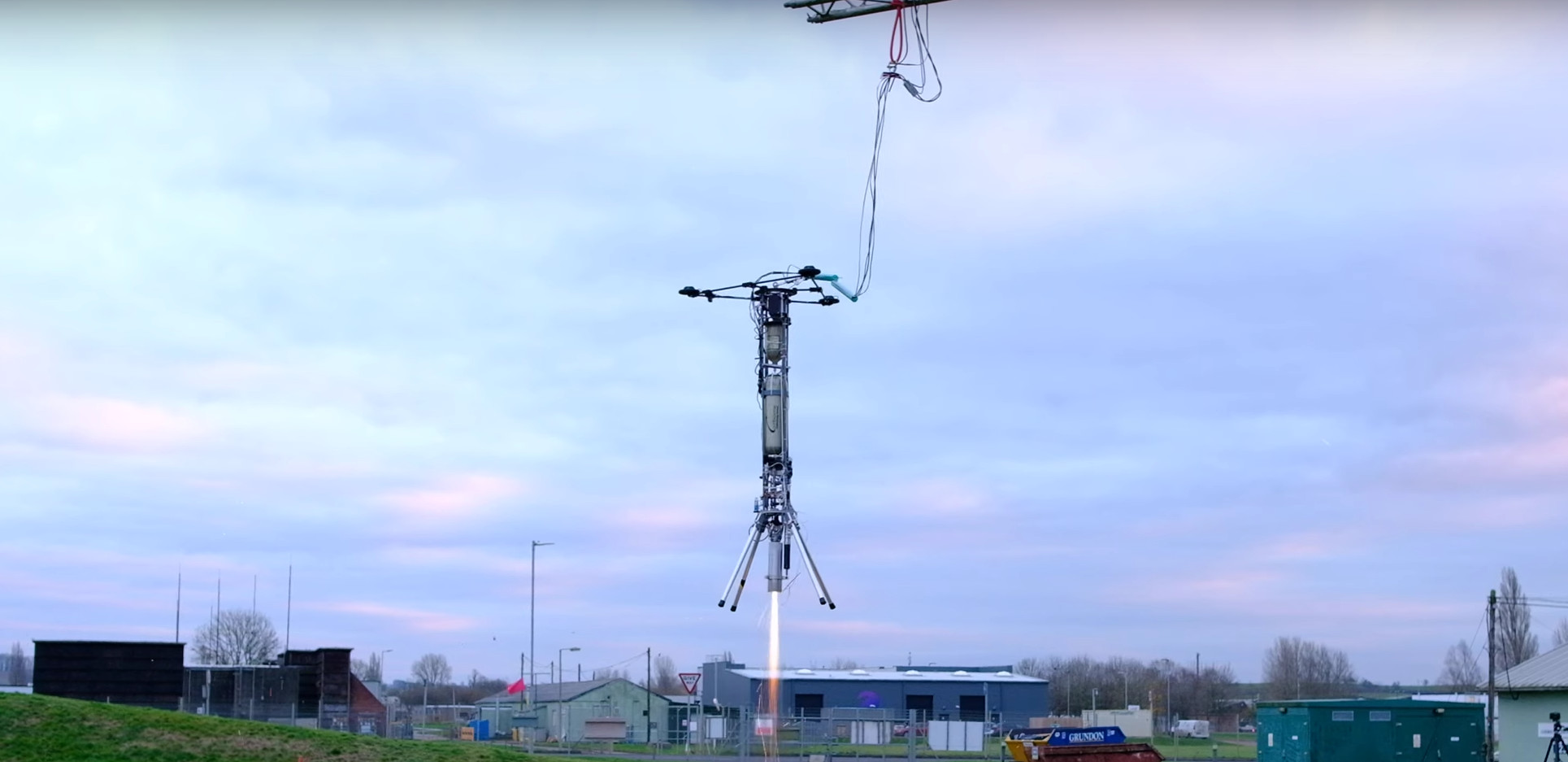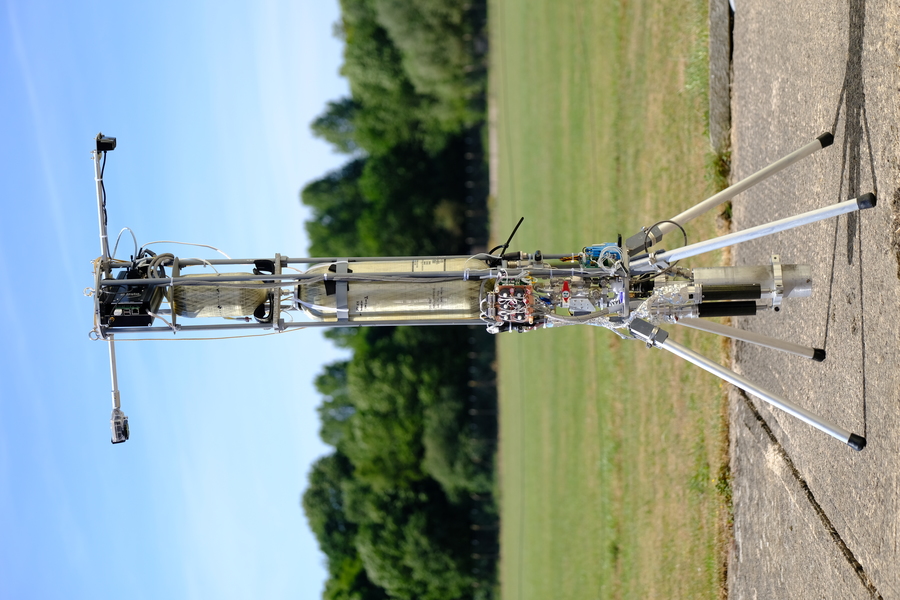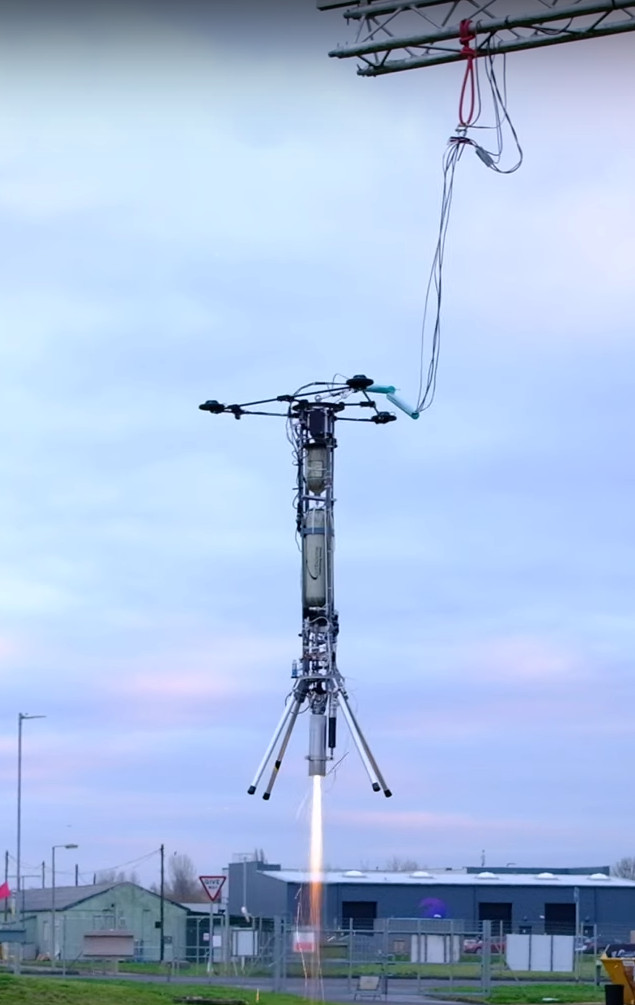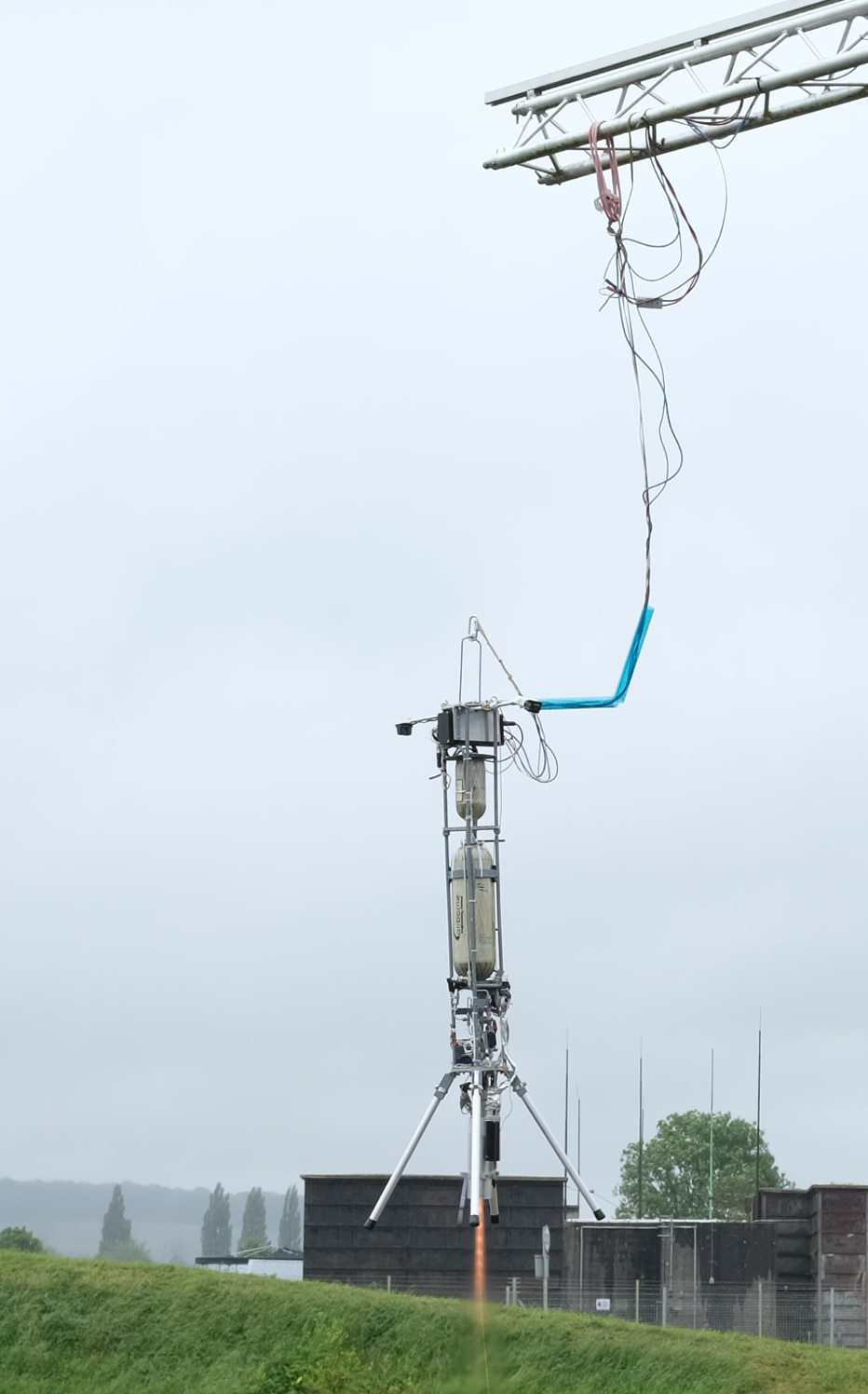

Airborne Engineering Limited (AEL) have designed and successfully flown a demonstrator VTVL (vertical take-off, vertical landing) rocket vehicle. This vehicle, codenamed “Gyroc”, a shortening of “gyro-stabilised rocket”, is the result of an internal research and development project that has been under way at AEL for a few years at the company’s Westcott facility in the United Kingdom.
Gyroc uses non-toxic rocket propellants (nitrous oxide and isopropyl alcohol), weighs about 20kg and can hover for over 30 seconds. The vehicle has two propellant tanks, a custom gimballed rocket engine with custom control actuators and actuated valves for throttling propellants. The vehicle measures its location using a custom IMU with sensor fusion between GPS and inertial sensor data. This location data the feeds into control algorithms for maintaining desired postion, attitude and thrust. Further details of the vehicle are given on our publications page.

AEL first flew Gyroc in 2019, and believes that this is the first time such a vehicle has been successfully tested in Europe. The video below shows one of the first flights, with the rocket taking off from support stands and hovering for a short time before rapidly diverting sideways, holding position, then returning sideways and shutting down. It is tethered to a gantry to prevent damage to the vehicle in the event that it has to be shut down prematurely.
VTVL rockets like Gyroc can be used to test technologies required for landing on other planets, such as the Moon or Mars. After more testing, Airborne plans to scale-up the vehicle so that it can be used to assist other organisations developing autonomous planetary landing technology and who need a way to carry out testing in a realistic way on the Earth. The development of Gyroc was been entirely self-funded by Airborne Engineering, but the vehicle is now undergoing further flight testing and control loop tuning under a programme with the European Space Agency.


